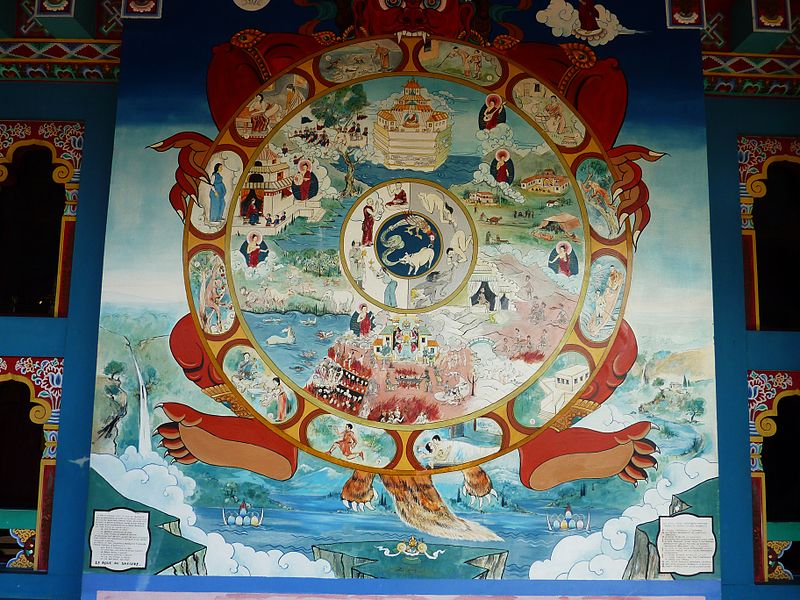
As readers of Part One of this article will recall, one question that has long troubled students of Buddhism is whether or not Buddhism should be considered a ‘religion’ on par with other world religions such as Christianity, Judaism, Islam, Hinduism, etc. Inasmuch as Buddhism does not affirm the existence of an almighty creator deity, it can be argued that Buddhism is not a religion but merely an ethical system, a spiritual practice, or a way of life.
Yet, as previously noted, Buddhist temples throughout Asia, and now in the West as well, have sacred altars on which are placed Buddhist statues that are objects of ritual worship. Further, the male and female clerics who staff these temples engage in the same kinds of ceremonies typically found in religious edifices throughout the world. What’s going on?
It is only natural that we take religion to be what we see around us, i.e., the allegedly universal religions of today. Moreover, nearly all of these universal religions, with the exception of Hinduism, claim to have been founded by particular historical personages. Thus, these religions are popularly understood as having been created by their founders as if, comparatively speaking, little had existed prior to the founders and their teachings. However, as demonstrated in Part One, all of these religions, Hinduism included, had their origins in what we today call animism. That is to say, they were all deeply influenced and shaped by what had preceded them.
In this connection, Buddhism and the teachings of its founder, Siddhartha Gautama (aka the Buddha), are no exception. For example, one of the Buddha’s central teachings was the doctrine of ‘karma’, a word now part of the English language. But was it the historical Buddha who first uttered or created this word? No, he did not, for it, too, has roots in animism.
Karma is a Sanskrit word that originally simply meant ‘action’. This early understanding of karma can be traced back to the Vedas, which today form the sacred texts of Hinduism. The Rigveda (c.1500-1000 BCE), the oldest of the four canonical Vedas, contains numerous hymns and prayers that invoke deities associated with natural elements, reflecting its animistic origins. The term karma appears in the Rigveda around 40 times where it only means work or deeds, although embodying a degree of moral significance connected to the proper performance of purification rituals and sacrifices.
The doctrine of karma was further developed in the Upanishads, a series of philosophical texts composed primarily in the first millennium BCE. In the Upanishads, we find, albeit briefly, the introduction of the idea that karma refers not just to ritual acts but ethical acts as well, including the teaching that every person will eventually reap the rewards of their good deeds as well as the consequences of their bad deeds. Yet, at the same time, primary emphasis remained on karma-producing actions that are ritually correct.
Given this background, it can be seen that the historical Buddha did not create the concept of karma but, instead, incorporated it into his teachings. However, in doing so he emphasised that karma was most definitely not a power outside of one’s control. Instead, he asserted that every intentional action we undertake, whether mental, verbal, or physical, creates an effect that influences our future experiences. It is the intention behind these actions that shapes the nature and intensity of their outcomes.
By emphasising the central role played by intention in karma, the Buddha thoroughly ethicised the concept. This was a very major change in the meaning of karma since its first appearance in the Vedas. Yet, understood within the context of the Axial Age, it was only one example, the Buddhist example if you like, of the overall awakening throughout the world to the idea that ethical conduct was of key importance and universally valid. This does not diminish the importance of the Buddha’s insight into the importance of ethical and moral conduct, but it does show that he was part of a much larger awakening among spiritual and philosophical leaders throughout the world.
My personal understanding of why this worldwide awakening occurred is that thanks to the Agricultural Revolution, it became possible for a segment of humankind to enjoy one of life’s most precious gifts—the time to think and reflect, including meditation. No longer did all members of the tribe have to devote the majority of their time to ensuring survival, i.e., to ensuring there was enough food to eat, etc. At least some of them now had the time to ponder the truly great questions of life (and death) as well as the nature of existence and the universe.
In concert with his (unknown to him) fellow spiritual leaders of the Axial Age, the Buddha emphasised the universal nature of truth, the importance of ethical conduct, and the path of spiritual practice.
Returning to the Buddha, he used and redefined other words that also had their origins in animism, for example, the central Buddhist concept of ‘dharma’. In the Vedas, we find that dharma originally referred to the correct performance of rituals and the fulfilment of one’s societal roles and responsibilities. Each individual had a specific dharma based on their role in society, which was linked to their caste or stage of life. This was part of a system that prescribed duties for different social classes and life stages.
With time, dharma evolved to include ethical and moral duties as well. It evolved to mean living in accordance with the laws of nature and society and fulfilling one’s obligations to family, society, and the gods. Dharma meant adhering to the principles that upheld the social structure and natural world, contributing to the overall harmony of society and the cosmos. This understanding laid the foundation for the concept of dharma in Buddhism.
The Buddha redefined dharma in a more spiritual and ethical manner centred on the truth of existence and the path to awakening (aka enlightenment). In concert with his (unknown to him) fellow spiritual leaders of the Axial Age, the Buddha emphasised the universal nature of truth, the importance of ethical conduct, and the path of spiritual practice. While dharma came to have additional meanings, it still primarily refers to the fundamental truth or laws governing the nature of reality. Once again, this is not meant to belittle the major contribution the Buddha made to our understanding of the universal nature of truth, but at the same time, he was not alone in his ‘awakening’, nor did he create something entirely new. Instead, he built his understanding on a term that had preceded him, one that had its origins in animism.
Yet another key term in Buddhism is that of samsara. In Buddhism, samsara refers to the cycle of birth, death, and rebirth driven by one’s karma. It is viewed as a process of continuous suffering caused by ignorance and one’s attachment to worldly desires. Thus, liberation from samsara is Buddhism’s ultimate goal.
On the surface, samsara appears to have little connection to animism. However, it is important to remember that in addition to animism’s focus on the presence of spiritual forces within the natural world, it typically views nature as going through continuous cycles of birth, death, and renewal, much like the seasons. Thus, cyclicality is a further core idea in animism, with the cycle of samsara representing a spiritualised version of the endless natural cycle of rebirth and transformation.
Like samsara, the word nirvana, the existence of which lies at the very heart of Buddhism, cannot be said to derive directly from animistic thought. Nevertheless, it has some connections to animism in that it reflects a shift in understanding from a more external, nature-oriented view of the divine or spiritual realm to a more internal, philosophical exploration of liberation and the cessation of suffering.
Further, animistic beliefs involve the worship of natural forces, spirits, and deities inhabiting elements of the natural world. In animistic traditions, the focus is typically on maintaining harmony with these external spiritual forces, ensuring a balance in nature and society. The Sanskrit word nirvana literally means ‘blown out’ or ‘extinguished’, as in extinguishing a fire. In animistic traditions, fire holds great spiritual significance as a living entity with divine attributes.
In his teachings, the Buddha repurposed the animistic association with fire to signify the elimination of internal suffering, rather than the pacification of external natural forces. For him, nirvana meant the ‘blowing out’ or ‘extinguishing’ of the fires of craving, hatred, and delusion. His emphasis shifted from harmonising with external forces as in animism to transcending internal defilements and achieving personal awakening.
Buddhism was still a ‘godless’ practice, lacking not only a deity or deities, but even rituals or the ‘worship’ of anything or anyone. The Buddha himself was not initially understood as being ‘sacred’, much less as a deity to be worshipped.
One final consideration is the connection of the Buddhist doctrine of dependent origination to animism. While like samsara and nirvana, dependent origination cannot be said to derive directly from animistic belief, there is nevertheless a connection here, too. That is to say, because animism believes that spirits or spiritual forces inhabit natural objects, phenomena, and entities, it recognizes a dynamic interaction between humans and the spirit world, with practices like rituals to appease or engage with spirits.
By contrast, the Buddhist doctrine of dependent origination (paṭicca-samuppāda) teaches that all phenomena arise in dependence upon other phenomena, i.e., that nothing exists independently since everything arises and ceases due to specific causes and conditions. Despite these differences, both dependent origination and animism recognize the interconnectedness of beings and phenomena. While in animism, this interdependence is often spiritual (e.g., relationships between humans, spirits, and nature), in Buddhism, it is primarily causal and impersonal. This connection reminds us once again that Buddhism emerged in a region where animistic practices and beliefs were prevalent.
Despite the influence of animism on key Buddhist concepts like karma, dharma, samsara, nirvana, and dependent origination, the Buddha’s teachings represent a significant evolution toward an internal, philosophical understanding of spiritual liberation, contrasting with the external, nature-focused concerns of animism. His teachings all reflect a more abstract and internalised spiritual goal and, together with the other spiritual thinkers of the Axial Age, represented a major, if not momentous, step forward beyond tribal-centric animism on humankind’s continuing quest for understanding.
In reviewing the basic teachings of the Buddha, whether expressed in well-known formulations like the Four Noble Truths and Eightfold Path, or the terms introduced above, we find nothing to indicate that Buddhism had become a ‘religion’, at least as defined by the Cambridge dictionary etc. Buddhism was still a ‘godless’ practice, lacking not only a deity or deities, but even rituals or the ‘worship’ of anything or anyone. The Buddha himself was not initially understood as being ‘sacred’, much less as a deity to be worshipped. That said, during his lifetime the Buddha was certainly accorded a great deal of respect, if not reverence, by both his disciples and the laity of all classes who came to him for both secular and spiritual advice.
The return of animism
To speak of the return of animism is to identify the process by which the Buddha became deified and the conduct of rituals became the central practice of Buddhism. It can be said that this process started almost immediately after the Buddha’s death, for his disciples faced the question of what to do with his cremated remains. While the Buddha himself did not advocate the construction or worship of burial mounds known as stupas, following his death his remains (aka relics) were nevertheless divided and distributed among various kingdoms, leading to the construction of stupas at these sites.
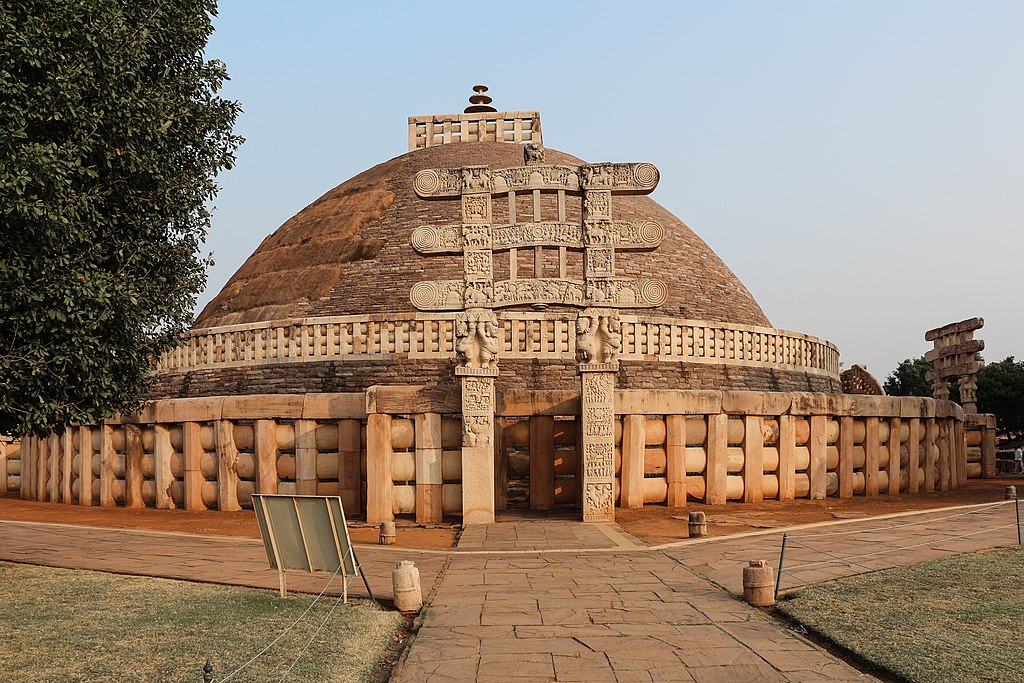
This development can be seen as a reflection of the animistic belief that not only natural objects but also constructed sites like mounds could be sacred in the sense that they were believed to house spiritual forces. Thus, stupas interring the Buddha’s relics were regarded as sacred places housing his continued spiritual existence. The circumambulation of stupas accompanied by the chanting of sutras became a common ritual practice believed to generate spiritual merit.
In many Buddhist traditions, the spiritual merit generated can be transferred or dedicated to others, especially deceased loved ones. The accumulated merit is believed to create conditions for a more favourable rebirth in the cycle of samsara (e.g., as a human or in a heavenly realm). Thus, the performance of these rituals upon the request of the laity became a significant source of income for Buddhist clergy as well as an early expression of Buddhism’s conversion into a religion.
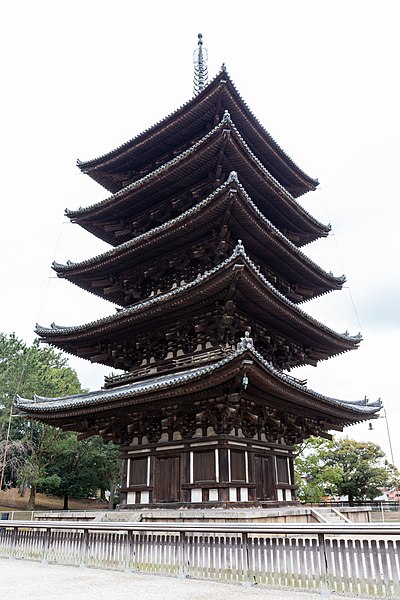
The first major figure credited with spreading Buddhism throughout much of the Indian subcontinent was King Ashoka (reigned c. 268–232 BCE). Legend states that Ashoka built 84,000 stupas enshrining the relics of the Buddha across the vast empire he created (one can be forgiven for wondering just how the Buddha’s relics were divided into 84,000 pieces). Further, as Buddhism spread from India to East Asia, stupas morphed into many more thousands of pagodas, further complicating the story of where the relics came from for these structures.
Because Ashoka had his policies inscribed on rocks and pillars throughout his empire, often near stupas, there can be no doubt that he promoted moral instructions inspired by Buddhist principles, including compassion, tolerance, respect for all life, and the importance of nonviolence. He clearly sought to encourage ethical living and embraced religious tolerance, promoting not only Buddhism but also respect for other religions within his empire.
Yet, from an Axial Age perspective, Ashoka’s promotion of Buddhism had an additional effect, if not motive, i.e., he was able to use the universal teachings of Buddhism to overcome, if not transcend, the animist-oriented loyalties of the many tribes and small city-states he had conquered in the course of creating his empire. Thus, Ashoka can also be credited (or blamed) for one other crucial development. Namely, he was among the first rulers of an empire to take political advantage of the averred universal truths of Buddhism to unify or consolidate an empire composed of disparate peoples, languages, and cultures. Though the names of such universal religions would vary, this was something that was done repeatedly by rulers of empires throughout subsequent world history.
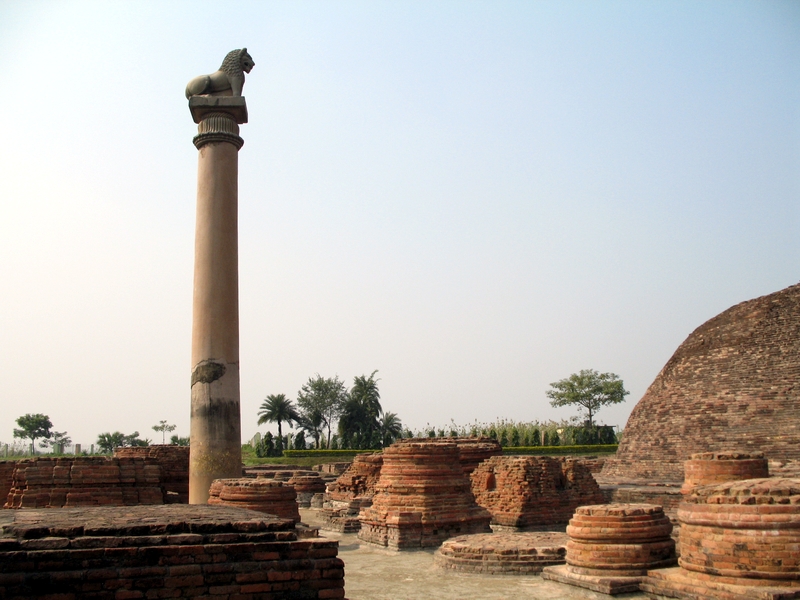
If the advent of stupas marked the beginning of ritual worship in Buddhism, it was not until the advent of Buddhist statuary that Buddhism can be said to have become a ‘religion’ in accordance with the dictionary definition. In the early centuries of Buddhist history, there were no statues depicting the Buddha. Since he had not yet been deified, stupas as objects of worship were sufficient. In addition, the presence and legacy of the Buddha were symbolised by objects and symbols, such as a wheel, symbolising the Buddha’s first sermon and the teachings of the dharma; an empty throne, representing the Buddha’s absence and awakening; or merely his footprints etched in stone.
It was not until the first centuries CE that Buddhist statues came into existence. It is this development, centuries after the Buddha’s death, that reveals one of the strongest animist influences on Buddhism. This is due to the presence of Greek culture and religion in the Gandhara region, today part of both Pakistan and Afghanistan. Owing to the spread of Greek culture to the East after the conquests of Alexander the Great in the fourth century BCE, we see the emergence of statues of Buddhist figures with Hellenistic features, i.e., clothed in toga-like flowing robes, complete with curly hair and aquiline noses. These early statues were clearly modelled on animistic Greek deities, in particular Apollo.

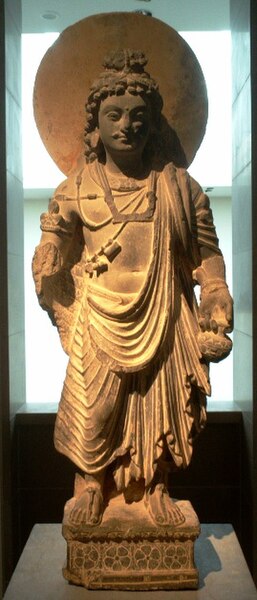
Many Buddhist clerics and scholars will argue that Buddhist statues are not spiritual or sacred representatives of deities but rather simple reminders or representations of Buddhahood writ large. However, when a new Buddhist statue is installed in a temple, the first ritual conducted is that of an ‘eye-opening’ ceremony. The purpose of the eye-opening ceremony is to endow the statue with spiritual power and presence. The statue is thereby transformed from being a mere artistic or physical representation into a sacred object. It is based on the belief that the particular Buddha represented becomes spiritually present in the statue once its eyes are ‘opened’. As in animism, once the object is considered both alive and inherently powerful, it becomes capable of bestowing blessings in response to believers’ entreaties. The bestowing of blessings is, of course, done on the condition that proper offerings have been made, especially by sutra-reciting ritual specialists, i.e., Buddhist clerics, the new shamans.
To call Buddhist clerics, i.e., Buddhist monks and nuns, the new shamans may seem strange if not wildly inaccurate to some. However, we need to recall that the role of shamans in animism was to serve as mediators between the spiritual and material worlds, facilitating communication with spirits and addressing community needs (e.g., for healing, protection, and the conduct of rituals). Toward this end, shamans entered altered states of consciousness to connect with spiritual realms. Today, throughout Asia, Buddhist clerics often perform similar roles for the laity, such as conducting rituals, including the placation of, and aid to, spirits, especially focused in East Asia on the spirits of dead ancestors. They further conduct ceremonies to heal the sick, protect the nation and its rulers, sell talismans of various kinds, and offer blessings for such things as bountiful harvests and success in business. Still further, clerics provide instruction on how to access altered states of consciousness through the practice of meditation. While Buddhist meditative states may differ from those attained by shamans, it is undeniable that over the centuries Buddhism has absorbed and integrated itself with local animistic and shamanic practices.
Returning to Buddhist statues, the creation of statues of the historical Buddha additionally served as the catalyst for the creation of statues of a variety of Buddhas and bodhisattvas, the latter term describing beings who delay their own enlightenment to help others. This in turn led to a greater emphasis on personal devotion, especially in the northern Mahayana tradition that developed from the first century BCE. The Mahayana tradition focused on Buddhas and bodhisattvas who specialised in bestowing blessings on various groups of believers based on such things as their professions or individual needs, i.e., everything from curing illness and accruing wealth to finding a suitable marriage partner and avoiding disasters, among many others. Buddhism, which had not been monotheistic in the first place, now took on all of the characteristics of polytheism, yet another characteristic of animism.
There is one final characteristic of the Buddhism we see today that needs to be examined, i.e., the role of belief in a saviour-like figure. Could what had originally been an introspective spiritual practice possibly contain a salvation figure anything like, for example, Jesus of Nazareth? The answer is that yes it could—and it did. How was this possible?
Given Buddhism’s emphasis on understanding the nature of the self, accomplished through the practice of meditation, the question must be asked: What about the vast majority of Buddhist laity engaged in farming who had no time, prior to the Industrial Revolution, of practising meditation over many years? What did Buddhism have to offer them, if anything?
In addition to the blessings of nature deities, one of the crucial aspects of pre-Axial Age animistic religion was the way it addressed the greatest mystery of life, i.e., death. Anthropologists suggest that one of humanity’s first attempts to address this question can be seen by the presence of ‘grave goods’ accompanying burials from as far back as 100,000 years ago. Death-related practices became more widespread and sophisticated as human societies evolved, particularly following the development of agriculture and the rise of complex societies. However, inasmuch as animistic tribal societies were characterised by mythological explanations at best, questions relating to the nature of an afterlife remained vague.
With the advent of universal religions, however, the question of what happened after death became a central concern, if for no other reason than that everyone faced it and now, thanks to the Agricultural Revolution, had more time to ponder it. Did life after death really exist? If so, how could one be sure of acquiring it? These are all religious questions to be sure!
From animism, humanity had come to believe that events beyond our control, e.g., rain, could only be controlled through supplications to superhuman, powerful deities. Given this, it was only logical that life after death, aka ‘eternal life’, must also be bestowed by a similarly powerful deity or deities. In turn, this led to belief in a ‘salvation figure’ who was capable of bestowing some form of life after death on the believer if certain conditions were met, beginning with the proper belief.
In non-Buddhist universal religions there were a plethora of deities, including the ‘son of a deity’, who were able to bestow life after death, if not eternal life, on the pious believer. But what hope was there for adherents of ‘godless’ Buddhism? Who or what could bestow life after death on them?
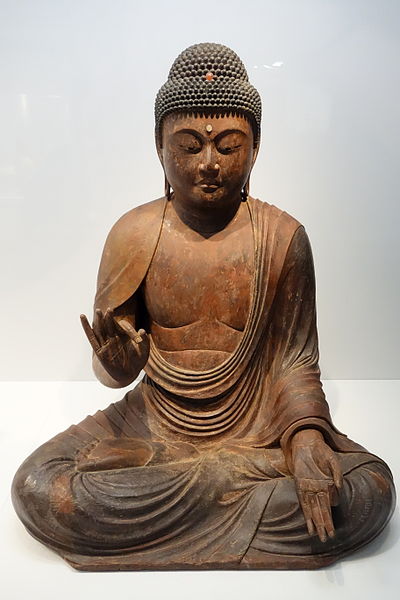
The advent of Buddhist statuary and its subsequent sacralisation made it possible for salvation figures to emerge in Buddhism. This is because a ‘salvation figure’ typically needs to have some kind of physical representation, something that can be properly worshipped. In the northern Mahayana tradition, one of the main salvation figures became Amitabha Buddha, who was said to have originally been a monk named Dharmakara. Following his awakening, Dharmakara, now Amitabha Buddha, is believed to have made a series of vows, one of which stated that anyone calling on his name would, following their death, be reborn in his Pure Land, a blissful realm. According to related sutras, all that was required was for believers to repeat the correct mantra, i.e., ‘I take refuge in Amitabha Buddha’ (aka Amida Buddha in Japan and Amituofo in China).
Devotion to a salvation figure was a critical reformulation, if not replacement, of the original Buddhist emphasis on self-understanding acquired through meditative practice. This development epitomises what I call the ‘religionization’ of Buddhism. Why did it happen? For the simple reason that in the aftermath of the Agricultural Revolution, followed later by the Industrial Revolution, the majority of the laity still had neither the time, nor often the inclination, to engage in a practice that traditionally required years of study and meditation. Practically speaking, who would have supported massive numbers of laypeople had they wished to do so? As in all of the universal religions we have today, salvation through faith is a far more attractive, if not feasible, option for the laity leading their busy lives.
In the southern Theravada tradition, the sacralisation of statues of the historical Buddha was sufficient to meet the spiritual needs of the laity. Further, in a deeply Theravada Buddhist country like Thailand, it is common for Thai men to become Buddhist monks. This suggests that it is possible to create a society in which large numbers of the laity become Buddhist monks engaged in the quest for self-understanding. However, in reality, animism is at work here, too.
First, Theravada Buddhism emphasises the accumulation of spiritual merit (aka good karma) as a way to improve one’s future life following death. Becoming a monk, even for a few weeks or months, is considered one of the best ways to earn such merit. Further, ordination as a monk benefits not only the monk himself but also his family, particularly his parents, for it allows him to transfer the merit he creates to his parents and ancestors. This enables them to be reborn into one of the higher six realms of existence alleged to exist after death.
While merit transference did not play a major role in the historical Buddha’s teachings, the conduct of ancestor veneration-related rituals became central to Buddhist practice in all traditions, especially those directed toward, and on behalf of, the laity. This was an extension of the long-held animistic belief that the spirits of ancestors can affect the living, providing protection and guidance when they are treated properly (by Buddhist clerics in this case) or punishing descendants in the event ancestors are either ignored or treated improperly.

Thai men who become Buddhist monks, even for just a short time, receive an added benefit that is attractive to many of them. Namely, when they are about to return to lay life, senior, lifelong monks offer them amulets designed to ensure their success in romantic relationships, i.e., enhance their attractiveness to women, as well as to attract wealth and make them more charismatic. These amulets typically consist of encased, miniature statues of the Buddha hung around the neck, or sacred mantras and representations of deities associated with charm and attraction. In doing this, Buddhist and animistic beliefs are blended seamlessly together to prepare monks leaving the priesthood for their future lives as laypeople.
Conclusion
Looked at objectively, if even a ‘godless’ practice of self-introspection like Buddhism can be infused with, if not captured by, fundamentally animistic understandings, the animistic influence on other religions claiming universality should be of no surprise. On the one hand, it is understandable, even inevitable, that tribalistic religion was focused solely on the well-being of the tribe. However, over the centuries, tribalistic religion, Buddhism included, has also contributed to massive bloodshed, extending, all too regrettably, to the present. Given this, it is difficult to believe that any religion will easily be able to overcome its animistic past. Yet, in our present, modern, interdependent world of both individuals and nations, it can be readily seen that tribal-oriented animistic traits are no longer sufficient to meet humanity’s needs for true universality.
It is easy to come to the conclusion that humanity’s ‘salvation’ is dependent on ridding ourselves of ‘religion’ altogether. While in the far distant future, this may be the solution, it is clear that for the foreseeable future religion will continue to play an important role in the lives and actions of many millions, if not billions. Thus, one alternative to dismissing religion altogether is to aid the adherents of universal religions to realise just how far away they are from the promise of their respective faiths. That is to say, help them realise just how deeply tribal-centric animism remains ensconced in what they believe to be a universal faith.
In the case of Buddhism, one promising development is the emergence of something called ‘secular Buddhism’. As its name suggests, this is an attempt to focus on the ethical teachings and meditative practice of early Buddhism, i.e., Buddhism before it became a religion. Buddhist concepts such as mindfulness, compassion, non-harming, and ethical living are made central, while traditional rituals like chanting, making offerings, and venerating religious figures are either ignored or rejected outright, as is belief in deities, spirits, and celestial realms.
A closely related movement known as ‘engaged Buddhism’ was first popularised by Thích Nhất Hạnh, a Vietnamese Zen master and peace activist, in the twentieth century. This movement seeks to apply Buddhist teachings and practices to address social, political, economic, and environmental issues, emphasising the integration of mindfulness, compassion, and ethical conduct into everyday life as well as social action. Thus, its proponents seek to alleviate suffering on both the personal and collective levels. Whether these movements will grow and prosper remains to be seen, but at least they represent an attempt to address the issues raised in this article.
Although uneven in content, similar reform/reformulation movements are appearing in many if not all of the world’s major religions. In other words, there is reason to hope that we will move beyond tribal-centric animism. However, in the face of the continuing, if not increasing, risk of nuclear annihilation, not to mention the ever more drastic effects of climate change, time is rapidly running out. One of Buddhism’s oldest admonitions is that we should ‘train as if our hair is on fire.’ This is a reminder that inasmuch as time is limited, we must seize the moment as if our lives depended on it. In fact, they do.
Related reading
The Highbrow Caveman: Why ‘high’ culture is atavistic, by Charles Foster
Awry in the Orient: some problems with Eastern philosophies, by Nicholas E. Meyer
The roots of political Buddhism in Burma, by Hein Htet Kyaw
The rise and fall of god(s) in Indian politics: Modi’s setback, Indic philosophy, and the freethought paradox, by Kunwar Khuldune Shahid
Atheism, secularism, humanism, by Anthony Grayling
Religion and the decline of freethought in South Asia, by Kunwar Khuldune Shahid
Judging the Flying Spaghetti Monster, by Derk Venema and Niko Alm
The secular religion of the Church of the Flying Spaghetti Monster, by Mienke de Wilde and Paul Cliteur
What is ‘religion’? Strasbourg and the Pastafarians again, by Frank Cranmer
Can sentientism save the world? Interview with Jamie Woodhouse, by Emma Park
British Islam and the crisis of ‘wokeism’ in universities: interview with Steven Greer, by Emma Park








Your email address will not be published. Comments are subject to our Community Guidelines. Required fields are marked *
Donate